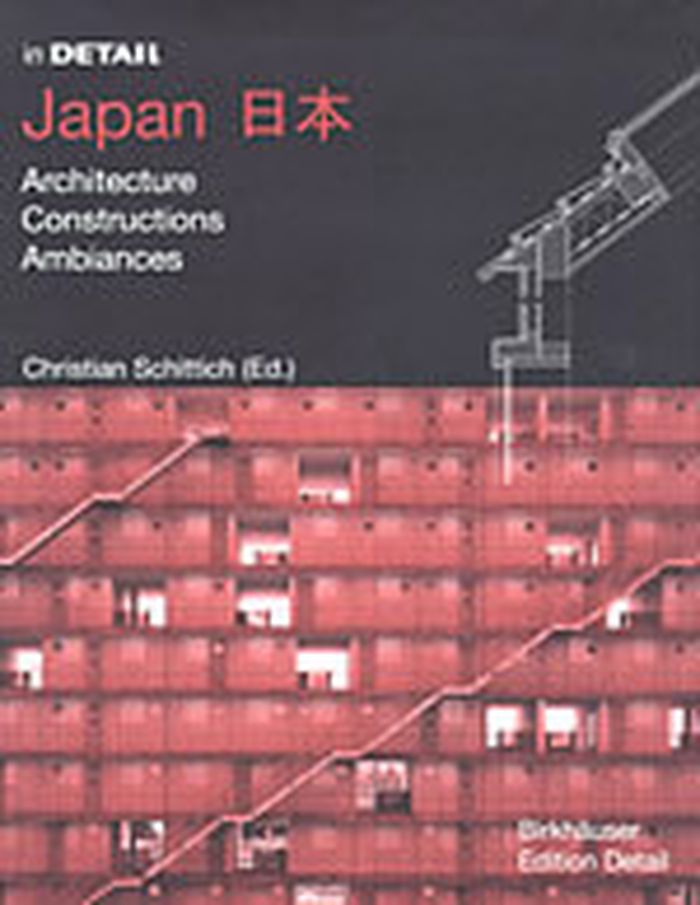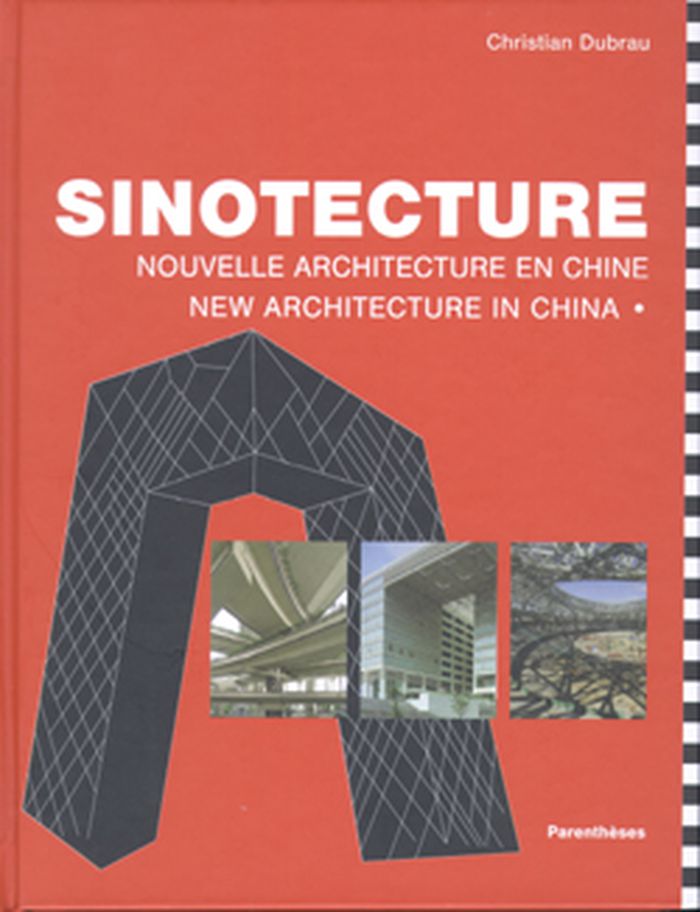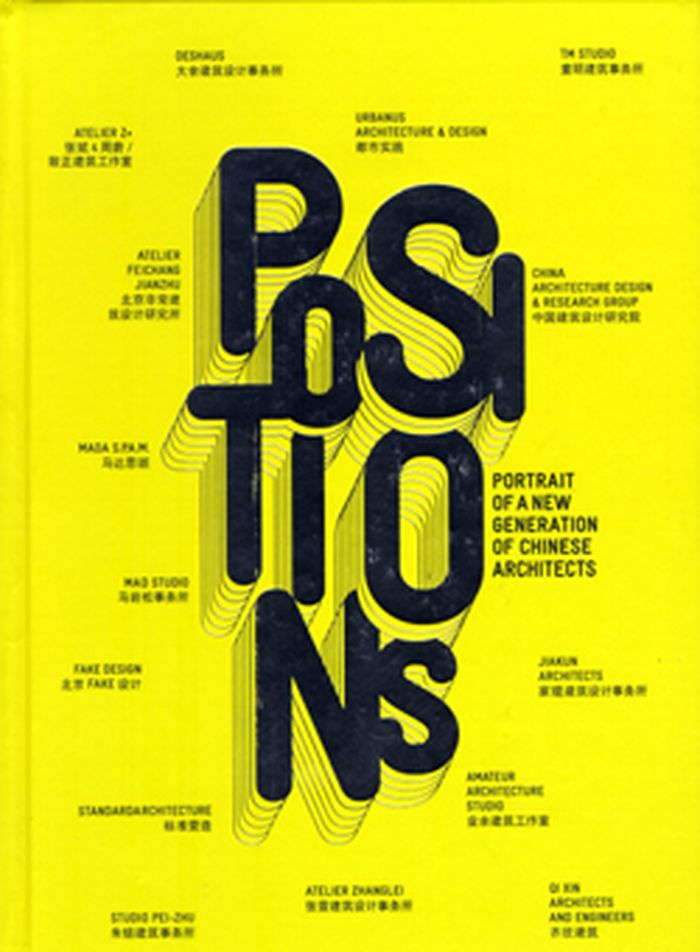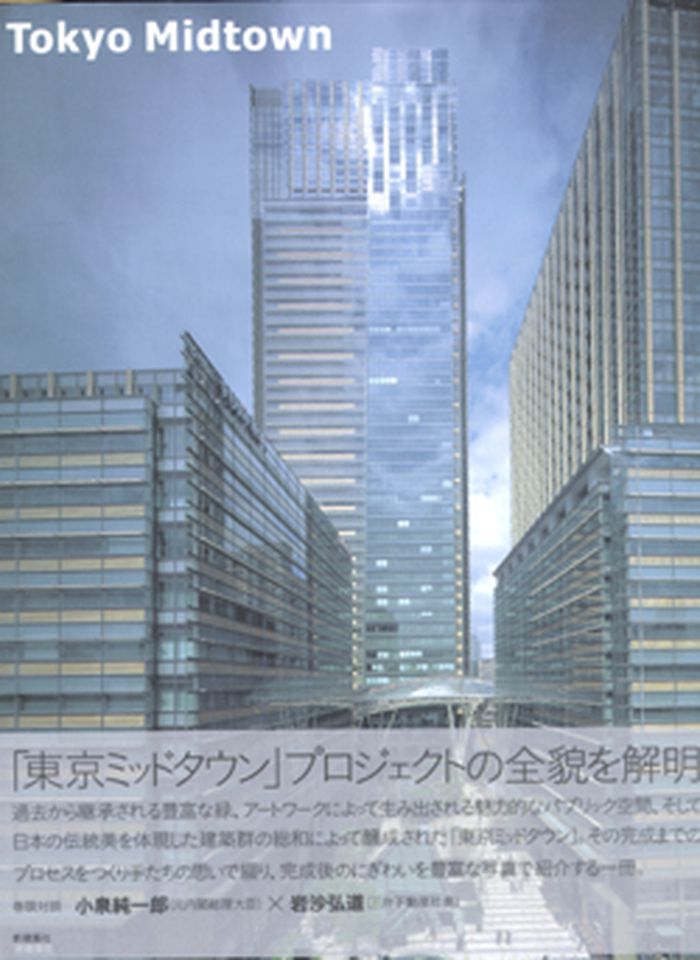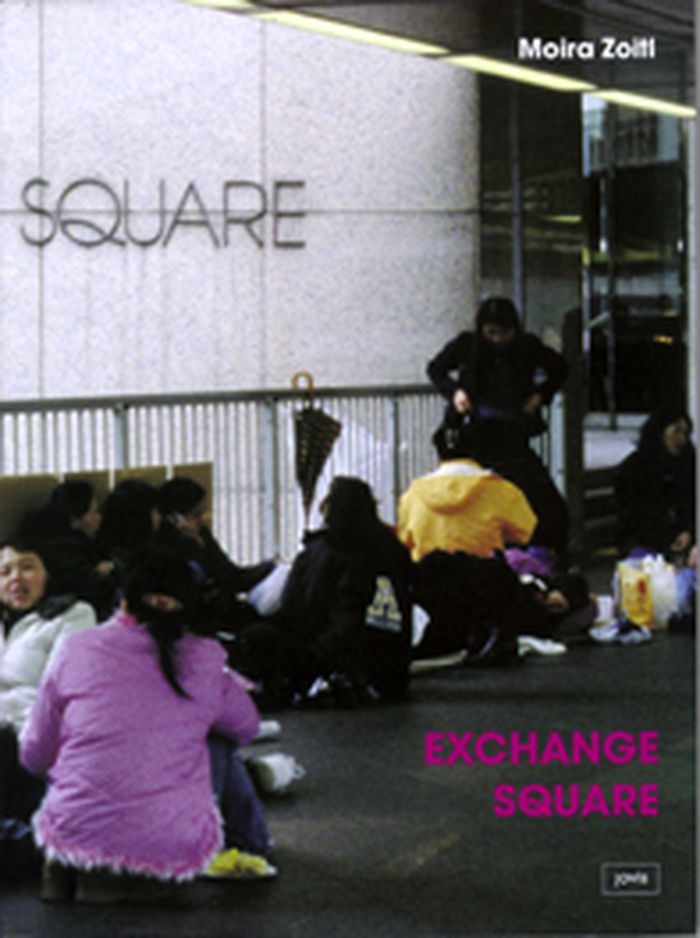livres
Do android crows fly over the skies of an electronic Tokyo? An interactive urban landscape of Japan
$31.95
(disponible sur commande)
Résumé:
The impact on Japanese cities of social and technological change is the focus of this collection of essays by Akira Suzuki. The essays describe urban rituals and catastophes, and suggest lessons that might be learnt from them.
Do android crows fly over the skies of an electronic Tokyo? An interactive urban landscape of Japan
Actions:
Prix:
$31.95
(disponible sur commande)
Résumé:
The impact on Japanese cities of social and technological change is the focus of this collection of essays by Akira Suzuki. The essays describe urban rituals and catastophes, and suggest lessons that might be learnt from them.
livres
janvier 1900, London
$41.95
(disponible sur commande)
Résumé:
For some 20 years, Kunming, a provincial capital city in China - 3.2 million inhabitants - has been the twin town of the European metropolis Zurich. As a direct result of this partnership, Kunming now has the first inner-city bus line in China, the first large-scale conservation of a historical part of the town, and new concepts for urban development at a regional(...)
septembre 2002, Basel
The Kunming project : urban development in China - a dialogue
Actions:
Prix:
$41.95
(disponible sur commande)
Résumé:
For some 20 years, Kunming, a provincial capital city in China - 3.2 million inhabitants - has been the twin town of the European metropolis Zurich. As a direct result of this partnership, Kunming now has the first inner-city bus line in China, the first large-scale conservation of a historical part of the town, and new concepts for urban development at a regional level. This pioneering collaboration between western and Chinese planning teams, and the ways in which urban planning has been managed, are not only significant for Kunming but are of importance for all countries which are interested in sharing the expertise and knowledge of professionals whether they be from East or West, North or South, for countries which wish to benefit from western building practice whilst avoiding their mistakes. The challenge of such joint projects surely lies in the confrontation resulting from the traditional and historical background in large Asian cities together with their sense of modernity which has often surpassed the modern western world not only in terms of progress but also problems. In English and Chinese
$108.00
(disponible sur commande)
Résumé:
Japan is becoming a popular travel destination for more and more architects today. With its wide variety of architecture, it is both a source of fascination and inspiration. Over a number of years, the review Detail has been consistently documenting the construction activities which have taken place in Japan, and this book draws on the best of their experience and(...)
octobre 2002, München
In detail : Japan - architecture, constructions, ambiances
Actions:
Prix:
$108.00
(disponible sur commande)
Résumé:
Japan is becoming a popular travel destination for more and more architects today. With its wide variety of architecture, it is both a source of fascination and inspiration. Over a number of years, the review Detail has been consistently documenting the construction activities which have taken place in Japan, and this book draws on the best of their experience and connections to present and analyse with plans and details the most interesting buildings from various architectural trends in contemporary Japan, including Ando's Museum for Contemporary Art in Naoshima, Toyo Ito's Mediathek, a residential building by Kazuyo Sejima, and a temple gallery in Kyoto by Takashi Yamaguchi. Introductory essays discuss the developments in Japanese architecture, and together with portraits of not only well-known Japanese architects and offices, but also young offices such as Atelier Bow Wow, this volume provides a stimulating discussion of current Japanese building in the context of traditional architecture.
HK Lab
$71.95
(disponible sur commande)
Résumé:
In HK Lab, an array of scholars from the fields of design, visual culture, business management, architecture, urban planning, art history, and semiotics focus on the unique conditions--geographic, historic, political, economic, social, and cultural--that have produced the ever-expanding network of ideas that make up Hong Kong.
août 2002, Hong Kong
HK Lab
Actions:
Prix:
$71.95
(disponible sur commande)
Résumé:
In HK Lab, an array of scholars from the fields of design, visual culture, business management, architecture, urban planning, art history, and semiotics focus on the unique conditions--geographic, historic, political, economic, social, and cultural--that have produced the ever-expanding network of ideas that make up Hong Kong.
$77.95
(disponible sur commande)
Résumé:
40 studios contemporains sont présentés par leurs projets en image et dessin sur 385 pages, accompagnés d'une carte de la Chine, un essai de Christian Dubrau, et des photographies de Florian Meuser.
janvier 1900, Marseille, Leipzig
Sinotecture : nouvelle architecture en Chine / new architecture in china
Actions:
Prix:
$77.95
(disponible sur commande)
Résumé:
40 studios contemporains sont présentés par leurs projets en image et dessin sur 385 pages, accompagnés d'une carte de la Chine, un essai de Christian Dubrau, et des photographies de Florian Meuser.
$45.00
(disponible sur commande)
Résumé:
This book presents over 40 finished works by Chinese architects, produced between 2003 and 2008. A compelling selection representing a new generation of architects in a country whose building rhythm over the last decade has been unstoppable, as China’s architects are making their mark within the backdrop of an avalanche of world class architecture stars.
octobre 2008, Paris
Positions, portrait of a new generation of architects
Actions:
Prix:
$45.00
(disponible sur commande)
Résumé:
This book presents over 40 finished works by Chinese architects, produced between 2003 and 2008. A compelling selection representing a new generation of architects in a country whose building rhythm over the last decade has been unstoppable, as China’s architects are making their mark within the backdrop of an avalanche of world class architecture stars.
Tokyo midtown
$185.00
(disponible sur commande)
Résumé:
Tokyo Midtown, this new and recently opened district in Tokyo, has been celebrated as a successful example of both fine architecture and cooperation between developers and different layers of government. This focused publication provides a comprehensive survey of the project and features a detailed collection of photographs that allow the reader to ‘walk through' the(...)
Tokyo midtown
Actions:
Prix:
$185.00
(disponible sur commande)
Résumé:
Tokyo Midtown, this new and recently opened district in Tokyo, has been celebrated as a successful example of both fine architecture and cooperation between developers and different layers of government. This focused publication provides a comprehensive survey of the project and features a detailed collection of photographs that allow the reader to ‘walk through' the area. Further, information is provided on the particular architects and their buildings along with detailed images, plans, elevations and technical details for each particular building.
$54.95
(disponible sur commande)
Résumé:
High-population centers of enormous size are springing up in China with dizzying speed. With them comes an increased demand for migrant workers in the construction sector, factories, and mines. In growth centers like the Pearl River Delta in Southern China, 40 million people have already set out from the underdeveloped provinces to earn their living there. The(...)
septembre 2008, Baden
From somewhere to nowhere: China's internal migrants
Actions:
Prix:
$54.95
(disponible sur commande)
Résumé:
High-population centers of enormous size are springing up in China with dizzying speed. With them comes an increased demand for migrant workers in the construction sector, factories, and mines. In growth centers like the Pearl River Delta in Southern China, 40 million people have already set out from the underdeveloped provinces to earn their living there. The photographer Andreas Seibert accompanied the workers repeatedly in order to document their everyday lives and their journey to the high-population centers. Their stories are told in a collection of striking photographs that provide a close-up portrait to complement the current discussion of economic growth in China. Accompanying the photographs are texts by two Chinese authors, who researched the social and economic background of the phenomenon and provide a direct look. With its combination of text and images, this volume conveys a unique impression of the scale of this modern migration of peoples.
$40.00
(disponible sur commande)
Résumé:
In the middle of the renowned financial and shopping district of Hong Kong lies Exchange Square. The name underlines not only the exchange of monetary value but also the people’s mobility: each Sunday, tens of thousands of female domestic workers from South and Southeast Asia reclaim the public space, here and in the surrounding streets and squares. The artist Moira Zoitl(...)
Exchange square, activism and everyday life of foreign domestic workers in Hong Kong
Actions:
Prix:
$40.00
(disponible sur commande)
Résumé:
In the middle of the renowned financial and shopping district of Hong Kong lies Exchange Square. The name underlines not only the exchange of monetary value but also the people’s mobility: each Sunday, tens of thousands of female domestic workers from South and Southeast Asia reclaim the public space, here and in the surrounding streets and squares. The artist Moira Zoitl has concerned herself with these women’s living and working conditions and with their everyday life and activism. EXCHANGE SQUARE presents artistic and collaborative projects, complemented by analytical texts and interviews about the forms of and the reasons for globalized job migration.
$32.00
(disponible sur commande)
Résumé:
Over the past two decades China has grown to become the largest construction market in the world, attracting many architects and urban planners from the West. As a result of this migration, it often happens that cultural and linguistic barriers between onsite experts from Western backgrounds and those from local environs create misunderstandings and stall the pace of(...)
China, China ... western architects and city planners in China
Actions:
Prix:
$32.00
(disponible sur commande)
Résumé:
Over the past two decades China has grown to become the largest construction market in the world, attracting many architects and urban planners from the West. As a result of this migration, it often happens that cultural and linguistic barriers between onsite experts from Western backgrounds and those from local environs create misunderstandings and stall the pace of execution. The Chinese architect Xin Lu has dealt with such issues firsthand and is especially well positioned to address them: he studied in China and Germany, and is currently working on a Chinese construction project for a German architectural office. Xin Lu has created this handbook from interviews and conversations he has conducted with architects, urban planners and academics from Europe and China, as well as with Chinese clients. Written to address issues of cultural disparity in the most practical terms, this volume elucidates differences between East and West in communications protocol and conceptual and working methods employed in the process of creating designs or in business. This volume is full of valuable advice, and will assist the process of intercultural cooperation.

